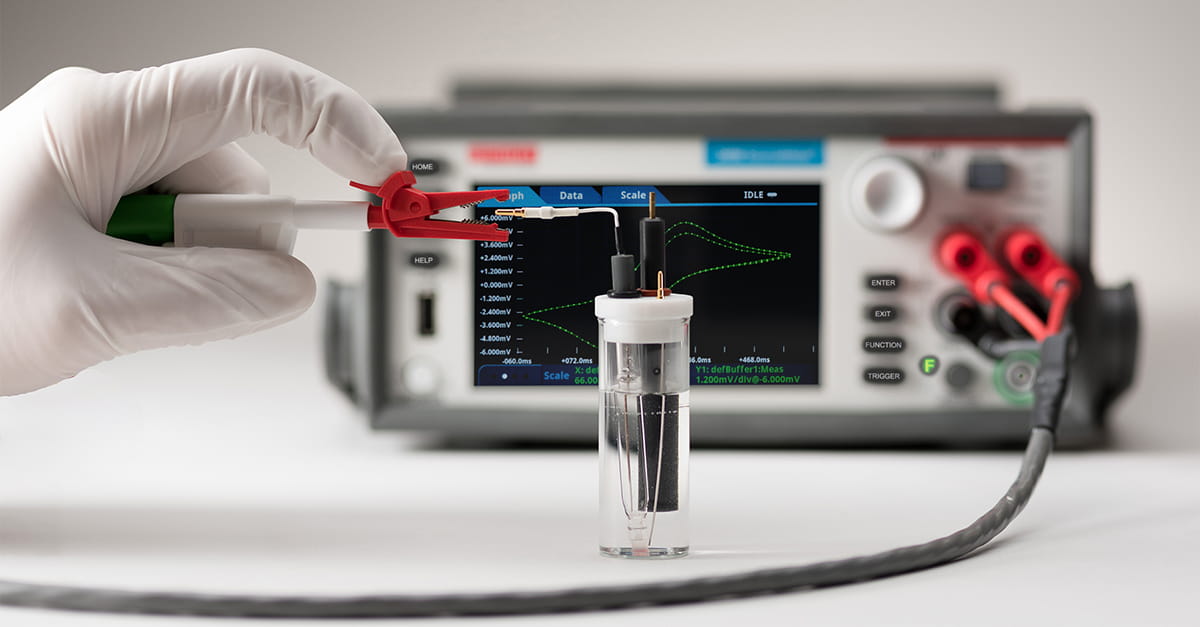


I was recently asked if a Keithley Source Measure Unit (SMU) can be used as a Potentiostat. The short answer is yes. SMUs are very versatile instruments that can source and measure voltage or current. They can compare the results as parameters (e.g. Voltammetry) or over time (e.g. Chronoamperometry).
Potentiostats are excellent instruments that can control potential or current (galvanostat). They can do Cyclic Voltammetry, steps, or measure over time (e.g. chronopotentiometry). They have high input impedance for reference electrode(s) to ensure correct working electrode potential.
Source-measure units, in many cases, can perform as well as potentiostats with the added benefit of a lower cost:
1. Wide range of voltages and currents for sourcing or measuring.
2. mV / nA sensitivities.
3. High impedance sense leads with a typical input resistance of 50G ohm and only 1pA of input bias current. This is usually acceptable with a wide variety of reference electrodes.
4. The SMUs run internal scripts so electrochemical tests can be run without the use of an external computer.
5. Results (graphs) are displayed right on the instrument’s front panel touchscreen.
6. Keithley has developed code scripts (they are similar to the Lua programming language) that can perform:
- Cyclic Voltammetry
- Linear Sweep Voltammetry
- Open Circuit Potential
- Potential Pulse and Square Wave Voltammetry
- Current Pulse and Square Wave
- Chronoamperometry (current versus time at a controlled potential)
- Chronopotentiometry (voltage versus time at a controlled current)
For their simplicity and performance, SMUs do have some limitations when compared to potentiostats:
- They do not generate a true linear sweep; the sweep is digitized. For example, on the 2 volt range, the minimum step size is 50uV.
- The SMU has a bandwidth limitation of about 10 kilohertz (depending on range and load) making it better for DC or low frequency measurements. Some Potentiostats have bandwidths in the megahertz range and can perform EIS measurements.
For safety we recommend that you do NOT enable the interlock. This prevents hazardous voltages from appearing at the end of the test leads and prevents a shock hazard. You are still able to use the instrument on the 20 volt range, which is usually enough for a single electrolytic or galvanic cell.
Next blog in this series: Test Setup Tips to make electrochemical measurements (Cyclic Voltammetry, Chronoamperometry etc.) using the Keithley 2450-EC and 2460-EC potentiostats.
Read more on the Keithley 2450-EC and the 2460-EC potentiostats.
Bill Pelster is the Director of Quality for the Keithley product line of Tektronix, Inc. He has been with the company for 37 years and has worked in engineering, applications, service, product safety, and quality. He has developed application software for testing high temperature superconductors and is now a member of the Keithley electrochemistry team. Bill holds a BEE degree from Cleveland State University (Fenn College) and an MBA from CWRU (Weatherhead School).


